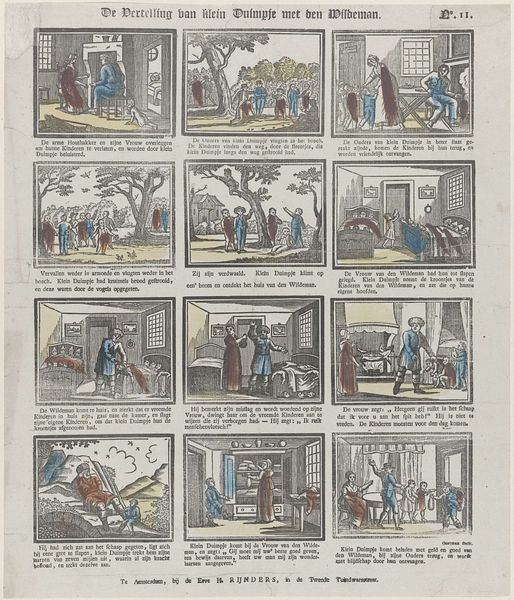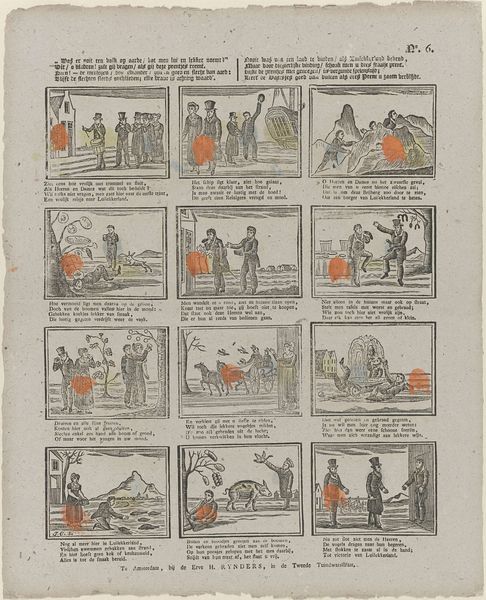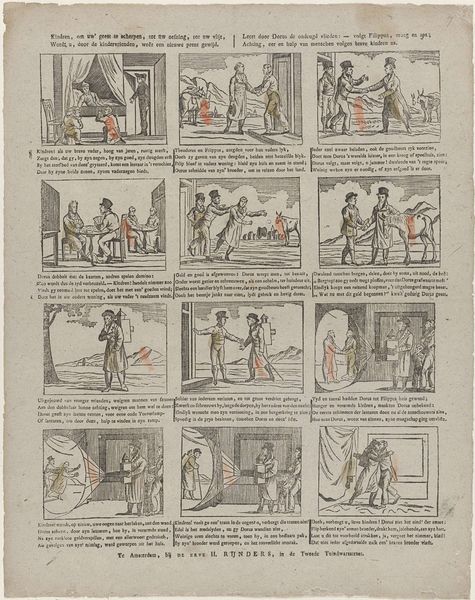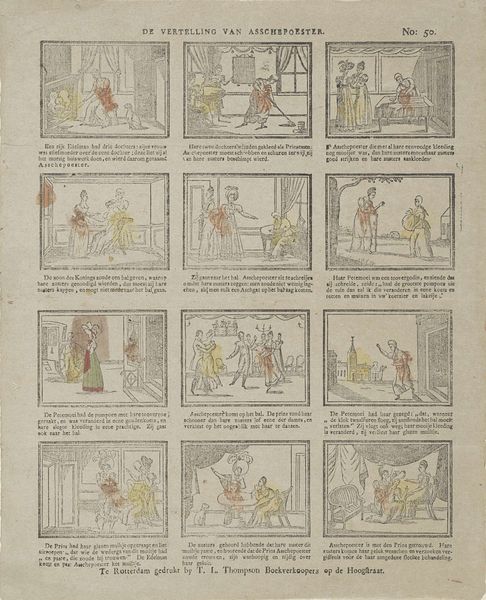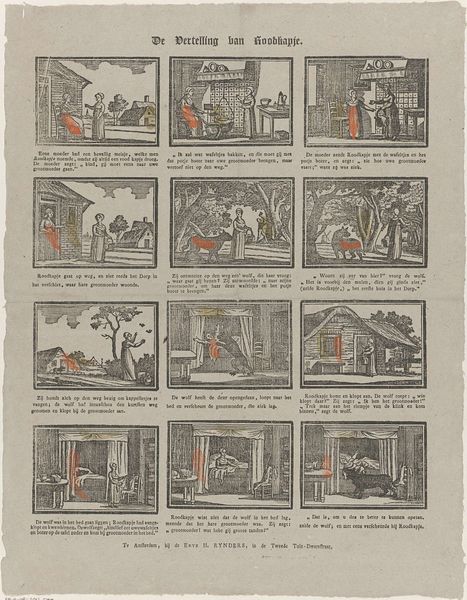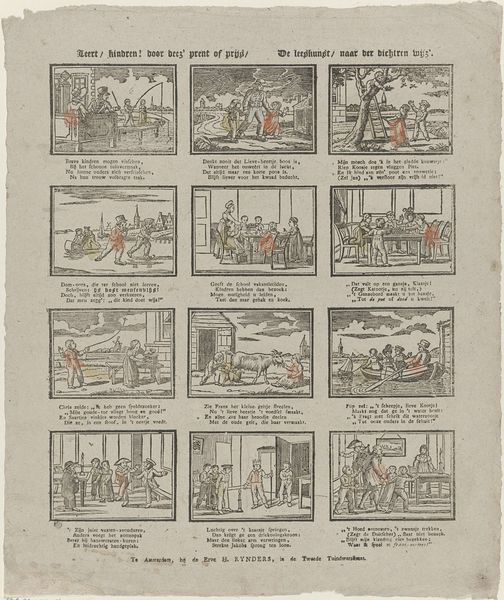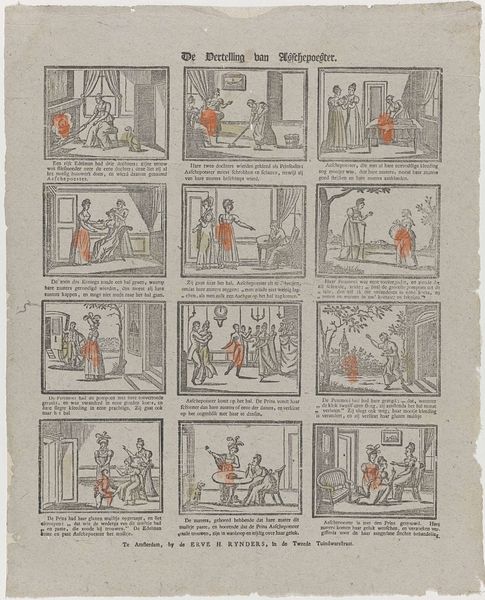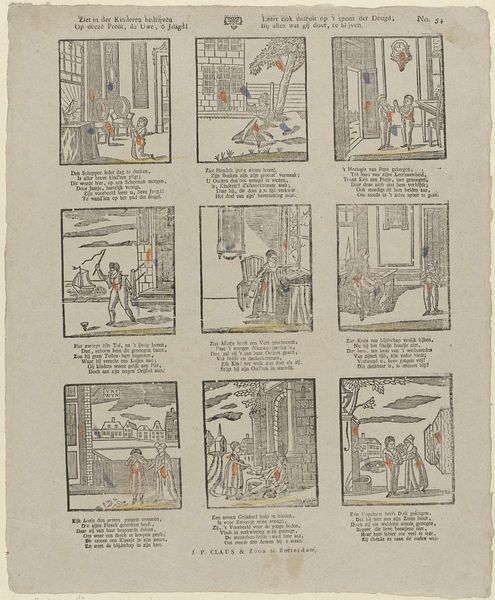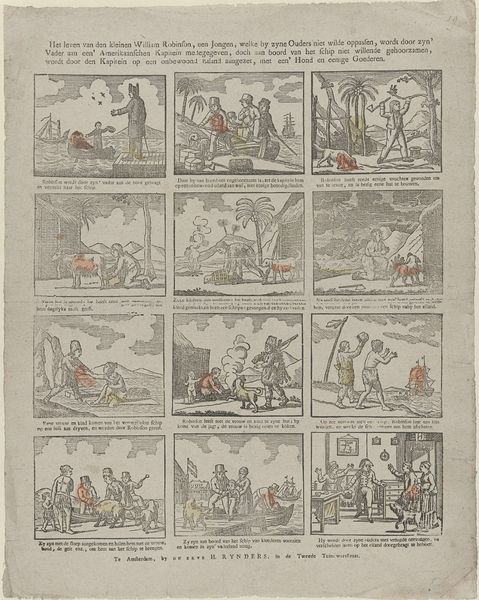
Kinderen! hier ziet gij van Speijk's roomrijk leven, daden en dood 1830 - 1870
0:00
0:00
drawing, print, etching, paper, ink
#
drawing
#
comic strip sketch
#
blue ink drawing
#
narrative-art
# print
#
etching
#
cartoon sketch
#
paper
#
ink
#
comic
#
history-painting
#
cartoon carciture
Dimensions: height 409 mm, width 337 mm
Copyright: Rijks Museum: Open Domain
Curator: Look at this intriguing piece. "Kinderen! hier ziet gij van Speijk's roomrijk leven, daden en dood"—"Children! Here You See the Famous Life, Deeds, and Death of Van Speijk." It's an etching by C.C.L. van Staden, likely created sometime between 1830 and 1870. What are your first impressions? Editor: Well, it’s strikingly…didactic! The little sequential panels, the title itself…it feels very much like a moralizing children's book page. It also brings up ideas of national pride and myth building, probably focusing on ideas about what makes "good" dutch identity. Curator: Absolutely. The piece recounts the life of Jan van Speijk, a Dutch naval hero who blew up his own ship to prevent it from falling into Belgian hands during the Belgian Revolution. Note the stylistic choices – the rudimentary almost comic book aesthetic. This was clearly meant for a broad, perhaps even unsophisticated, audience. Editor: Exactly! Think about the socio-political context: the Netherlands, still relatively young after the Napoleonic era, attempting to solidify its national identity. This piece functions as propaganda, presenting a heroic narrative centered around sacrifice and devotion to the nation. Curator: We see images that convey very intimate ideas, scenes from Speijk's childhood and adulthood interwoven to produce a portrait of both devotion and violence, of life and death, that all amount to service to the "nation". It's using a specific event to solidify a vision of what it means to be a patriotic Dutchman. Editor: What's also crucial here, and in this museum’s mandate in particular, is considering how figures like van Speijk were remembered through imagery and how popular reception helped elevate figures to mythological status. I’m also interested in exploring, through contemporary lenses, the complexities and troubling undercurrents that glorifying such violent acts promotes. Are there parallels to current issues with regards to other such heroic myths around nation-building in a post-colonial, globalized world? Curator: Good questions to ask about historical prints that carry the weight of both patriotism and propaganda. These pieces are designed to promote conversations, which makes them relevant beyond their immediate moment.
Comments
No comments
Be the first to comment and join the conversation on the ultimate creative platform.
